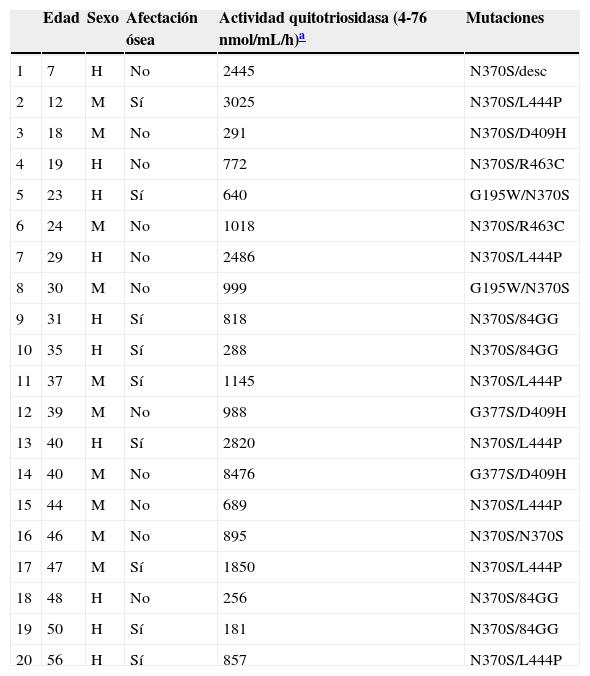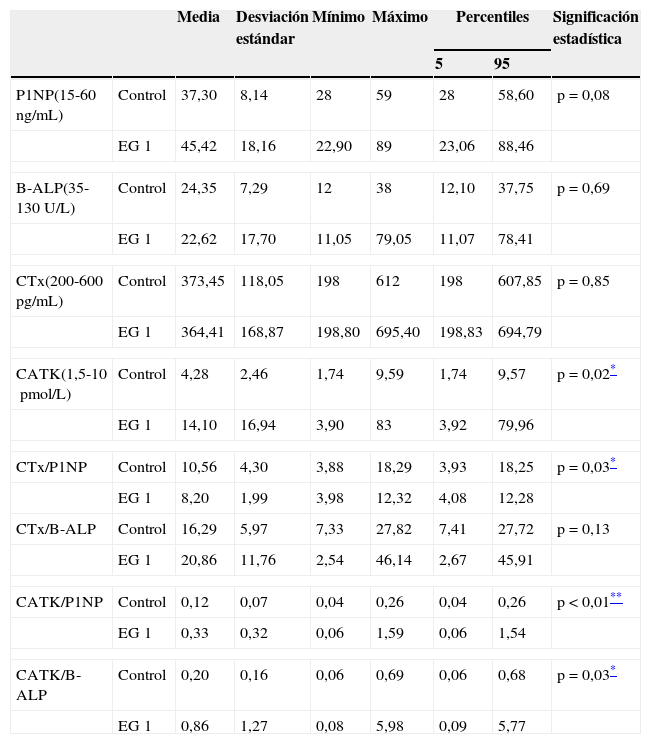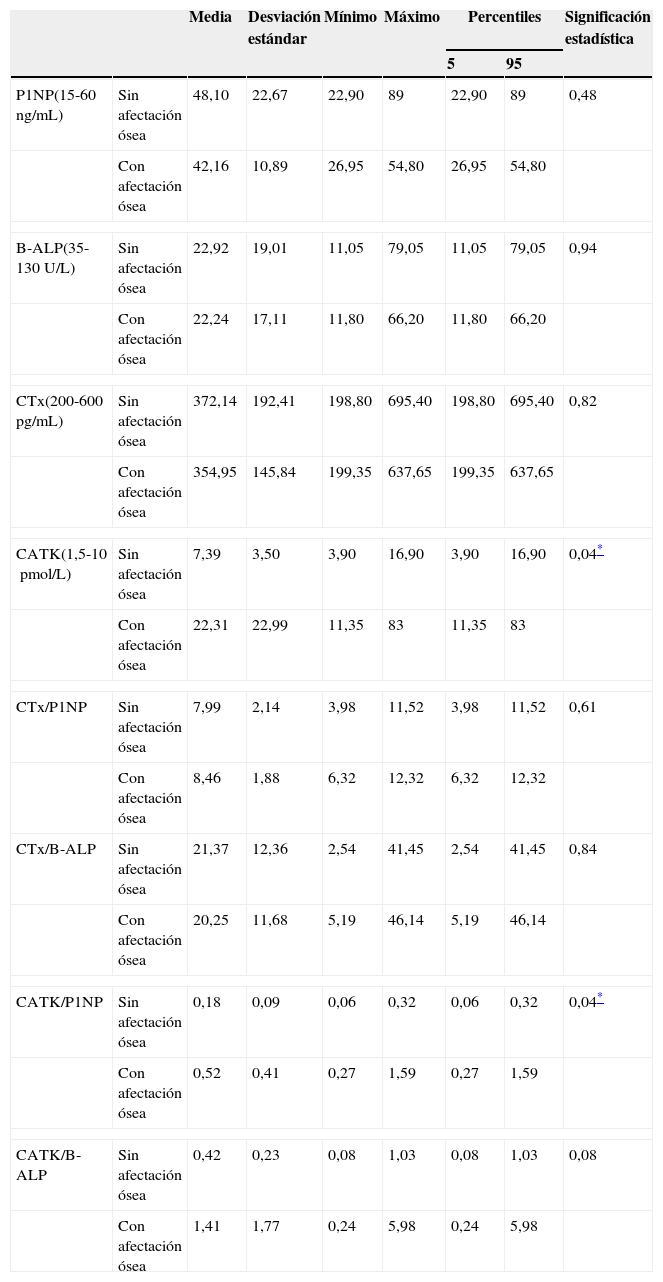La enfermedad de Gaucher es un trastorno hereditario, que se origina como consecuencia del déficit de la actividad β-glucocerebrosidasa ácida, responsable de la degradación de glucosilceramida hasta ceramida y glucosa. Aunque el trastorno de base es fundamentalmente hematológico, el hueso es la segunda estructura más frecuentemente afectada. La catepsina K (CATK) es una enzima implicada en el proceso de remodelado óseo, habiéndose propuesto que la determinación de sus concentraciones séricas podría aportar información complementaria a la de otros biomarcadores.
Pacientes y métodosSe realizó un estudio en 20 controles sanos y 20 pacientes con enfermedad de Gaucher tipo 1, de las comunidades autónomas de Andalucía y Extremadura. Se determinaron como biomarcadores de remodelado óseo la bone alkaline phosphatase (B-ALP, «fosfatasa alcalina ósea»), el amino-terminal propeptide of procollagen type 1 (P1NP, «propéptido aminoterminal del procolágeno 1»), la β-Cross Laps, carboxy-terminal telopeptide of collagen type 1 (CTx, «fracción β del colágeno tipo 1») y CATK por técnicas de electroquimioluminiscencia y enzimoinmunoanálisis.
ResultadosExiste un incremento en los niveles de CATK y las ratios CATK/P1NP y CATK/B-ALP en los pacientes con Gaucher tipo 1 respecto a la media obtenida en el grupo control. Por otro lado, considerando la existencia o no de manifestaciones óseas en el grupo de pacientes, la CATK y la ratio CATK/P1NP muestran niveles medios superiores en aquellos pacientes con daño óseo respecto a los que no lo presentan.
ConclusionesAunque los estudios radiológicos constituyen el gold-standard para el seguimiento de enfermedad ósea en pacientes con enfermedad de Gaucher tipo 1, debe considerarse la utilidad de la CATK como posible indicador de daño óseo en estos pacientes. Asimismo, este parámetro puede utilizarse en la monitorización del tratamiento de la enfermedad ósea.
Gaucher disease is an inherited disorder caused by deficit of acid β-glucocerebrosidase, responsible for the degradation of glucosylceramide to ceramide and glucose. Although the disorder is primarily hematologic, bone is the second most commonly affected structure. Cathepsin K (CATK) is an enzyme involved in bone remodelling process. It has been proposed that determination of its serum concentrations may provide additional information to other biomarkers.
Patients and methodsThe study included 20 control subjects and 20 Gaucher type 1 patients from Andalusia and Extremadura regions. We analyzed the biomarkers of bone remodelling: the bone alkaline phosphatase (B-ALP), the N-terminal propeptide of type 1 procollagen (P1NP), the β carboxyterminal telopeptide of type 1 collagen (CTx) and the CATK through electrochemiluminescence and immunoassay techniques.
ResultsThere is an increase in levels of CATK, CATK/P1NP and CATK/B-ALP ratios in type 1 Gaucher patients compared to the control group. Considering the existence of skeletal manifestations in the patient group, the CATK and CATK/P1NP ratio showed higher levels in patients with bone damage compared to those without it.
ConclusionsAlthough imaging studies are the gold standard for monitoring bone disease in type 1 Gaucher patients, the utility of CATK should be considered as a possible indicator of bone damage in these patients. Furthermore, this parameter can be used in the monitoring of the treatment of bone pathology.
Artículo
Comprando el artículo el PDF del mismo podrá ser descargado
Precio 19,34 €
Comprar ahora












